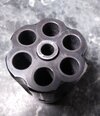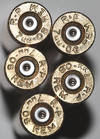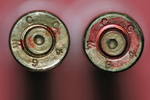mcb
Member
That is correct the thrust back against the recoil shield (often called bolt thrust) of a revolver is directly proportional to both the chamber pressure and diameter of the chamber. A first order approximation is the pressure times the cross sectional area of the chamber. If you really model it correctly their is a small amount of resistance from the friction of the brass against the chamber walls but that resulting force is really small. In addition the brass itself is not strong enough to support the pressure/force without the recoil shield there to support the brass. Think of it as the brass acts as a gas seal the steel of the revolver contains the pressure.Woe, woe, woe, are you saying that every time you fire a round in a revolver, the case slams up against the recoil plate/shield? That the lateral pressure against the chamber wall prevents nothing? I want to be very clear here.





